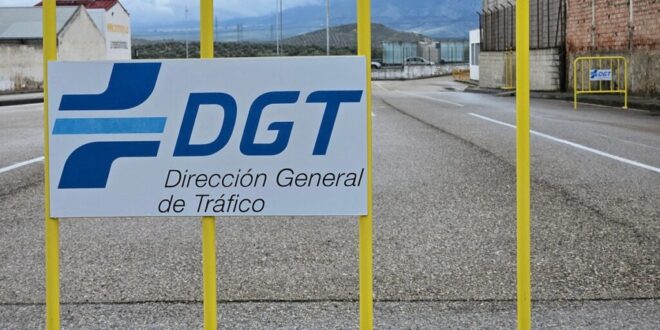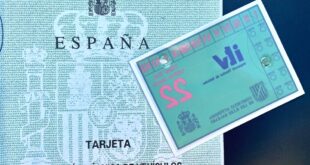DGT rules in focus – Spain’s traffic authority is introducing new guidelines for shared vehicle identification through the V-26 sticker.
Credit : FotoAndalucia, Shutterstock
Many drivers in Spain already know the colourful environmental stickers that are stuck on their car windscreens.
These stickers are used to control access to low emission zones (Zonas de Bajas Emisiones), particularly in large cities where pollution has become a major concern. Many people are unaware that the DGT issues a fifth sticker, which has nothing to do about emissions.
It’s called the V-26, and it’s aimed at vehicles used in shared mobility schemes — things like carsharing or motosharing. As Spain’s towns and cities embrace sustainable travel, this sticker will become more important, both for visibility as well as access.
Do you need a V-26 DGT sticker to drive a V-26 DGT? Here’s the meaning behind it
Unlike the B, C, ECO or Zero labels, which rank cars by emissions, the V-26 isn’t about pollution — it’s about purpose. It’s a way to identify motorbikes and cars that are part a shared transportation network. So, we’re talking about vehicles that you book through an app for a quick journey across town — not your privately owned car.
The sticker was introduced in 2018 and is only available to vehicles that are listed on the DGT’s official list of vehicles for shared use. The sticker isn’t something that regular drivers can simply apply for. To qualify, the vehicle needs to belong to a registered carsharing or rental company, be clearly part of a shared fleet, and be fully compliant with economic activity regulations — including tax registration under Spain’s Registro de Actividades Económicas.
The sticker itself is round and blue. It’s about the same size of the environmental labels. It features a white car surrounded by five white human figures — a visual nod to collective transport. You’ll also see the car’s number plate and, in some cases, a ‘zero emissions’ badge if the vehicle runs fully electric.
V-26 VGT sticker: benefits for sharing cars in urban area
Although the V-26 isn’t mandatory everywhere, local councils are now requiring or recommending it, especially in places where carsharing has become popular. And it’s not just about looking official — the sticker comes with perks.
V-26-equipped vehicles can use the high-occupancy lanes, even with just one occupant. In regulated zones, they may park at reduced prices (or for free), and be allowed into areas where normal cars are not allowed. The V-26 is a way to encourage people to use shared transportation and to give up their personal vehicles for short trips.
The location of the sticker depends on the vehicle type. It must be placed at the top left corner of the car’s windscreen. For motorbikes — which often lack windscreens — it should be fixed somewhere visible on the fairing or bodywork. It is important that both police officers and the general public can easily identify shared-use vehicle.
What Spain’s new traffic laws mean for the future city driving
V-26 is only one part of the larger shift in how Spain wants its citizens to move about their cities. Carsharing is no longer just a trendy option — it’s becoming a central pillar of urban transport strategy.
Spain’s Traffic Authority (DGT), has made it very clear that shared mobility will be the future. Pere Navarra, its director, pointed to cities like Paris where motorway lanes are dedicated for cars carrying more than one person. Anyone who drives alone in those lanes from May 2025 will be fined.
Spain’s high-occupancy vehicles (VAO) lanes are also planning similar rules, in which the number of passengers will be strictly enforced at peak times. The goal is to get drivers to reconsider how and when they drive.
So, if you’re part of a carsharing platform or thinking of joining one, that little blue V-26 sticker might soon open up big advantages — and help you stay ahead as Spain’s transport rules continue to evolve.
Keep up with the latest news and updates from Spain
 Costa News Spain Breaking News | English News in Spain.
Costa News Spain Breaking News | English News in Spain.





